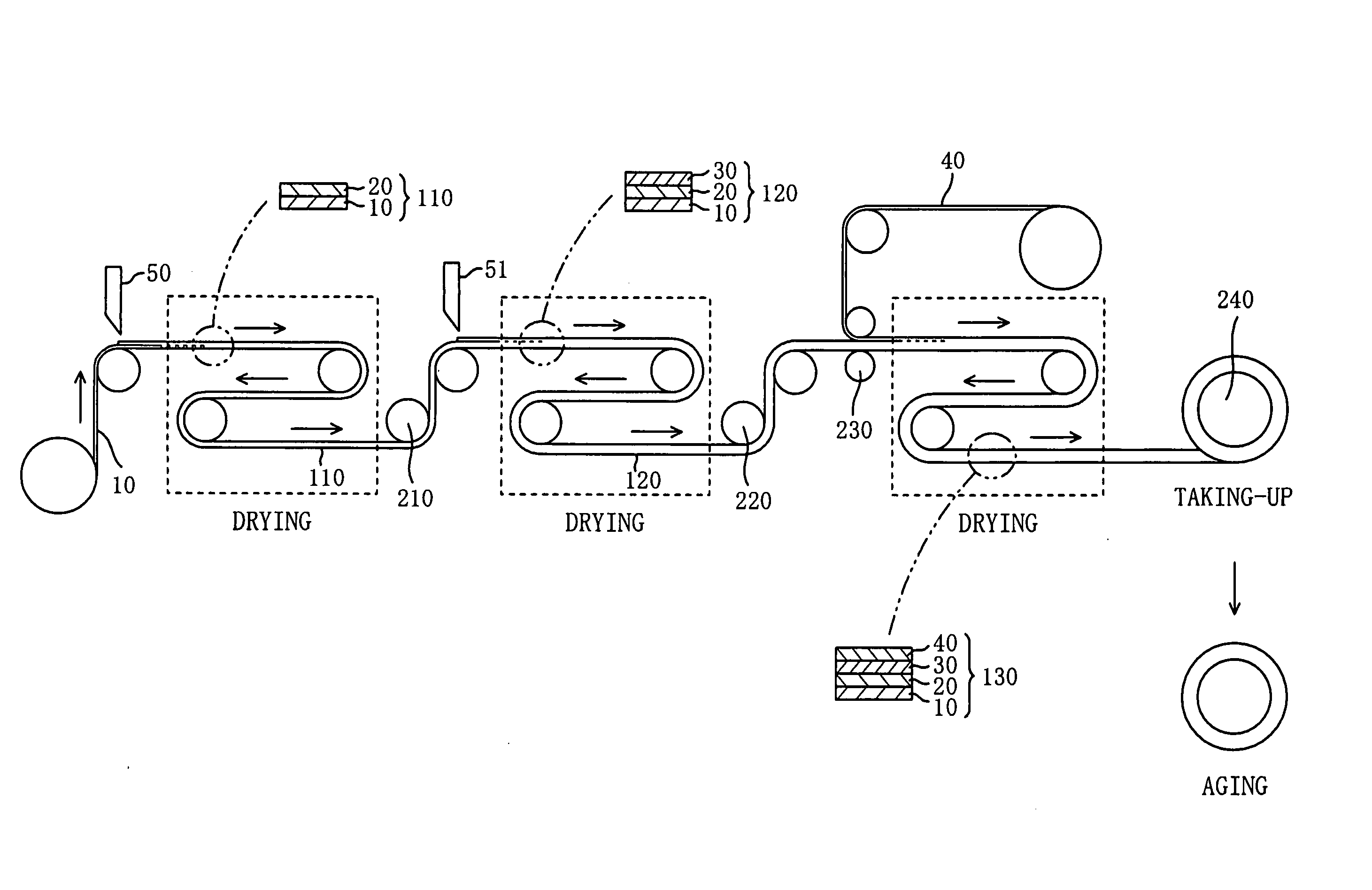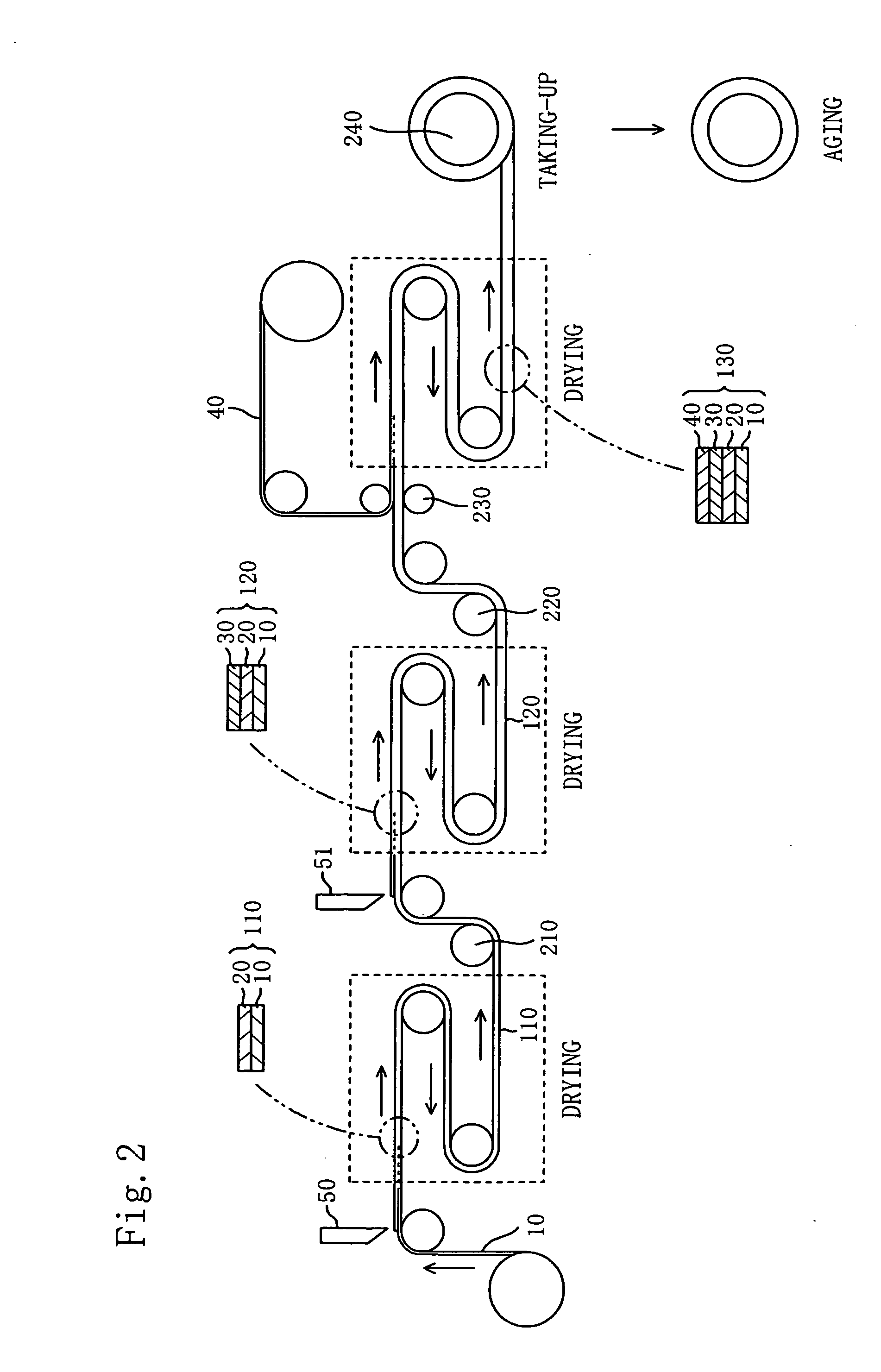Speaker member and method for manufacturing the same
a technology of speaker and body, applied in the field of speaker body, can solve the problems of insufficient s/n ratio of metal foil, poor releasability of speaker or edge, and material differences, and achieve the effects of good releasability, excellent moist heat resistance, and light resistan
- Summary
- Abstract
- Description
- Claims
- Application Information
AI Technical Summary
Benefits of technology
Problems solved by technology
Method used
Image
Examples
example 1
a. Formation of Resin Film Layer
[0069] On a release material with a flat surface, a polycarbonate-based urethane resin solution (20% solid content) was applied by using a doctor knife coater (clearance with a doctor knife blade of 0.1 mm) such that a thickness after drying was 20 μm. The laminate was dried under heating at 80° C. for 10 minutes, to thereby obtain a polycarbonate-based urethane resin film (heat shrinkage ratio of 0.8 to 1.3%).
b. Formation of Adhesive Layer
[0070] On the polycarbonate-based urethane resin film obtained in the step described above, a polycarbonate-based urethane adhesive was applied by using a doctor knife coater (clearance with a doctor knife blade of 0.1 mm) such that a thickness after drying was 30 μm. The whole was dried under heating at 80° C. for 10 minutes, to thereby form a semi-wet adhesive layer (heat shrinkage ratio of 0.5 to 1.0%).
c. Lamination of Base Material
[0071] To the laminate having the adhesive layer formed thereon, a woven f...
example 2
[0076] On the urethane resin film layer obtained in Example 1, a polycarbonate-based urethane adhesive for wet lamination (molecular weight of about 50,000 to 100,000) was applied by using a doctor knife coater (clearance with a doctor knife blade of 0.1 mm) such that a thickness after drying was 30 μm. Then, the whole was dried under heating at 80° C. for 10 minutes, to thereby form a second adhesive layer (heat shrinkage ratio of 0.6 to 1.0%) in a wet state. Further, a polycarbonate-based urethane adhesive for dry lamination (molecular weight of about 20,000 to 50,000) was applied thereon by using a doctor knife coater (clearance with a doctor knife blade of 0.1 mm) such that a thickness after drying was 30 μm. The whole was dried under heating at 80° C for 10 minutes, to thereby form a first adhesive layer (heat shrinkage ratio of 0.5 to 0.8%). A speaker member was molded in the same manner as in Example 1 except that those adhesive layers were used. The obtained speaker member w...
PUM
| Property | Measurement | Unit |
|---|---|---|
| thickness | aaaaa | aaaaa |
| thickness | aaaaa | aaaaa |
| heat shrinkage ratio | aaaaa | aaaaa |
Abstract
Description
Claims
Application Information
 Login to View More
Login to View More - R&D
- Intellectual Property
- Life Sciences
- Materials
- Tech Scout
- Unparalleled Data Quality
- Higher Quality Content
- 60% Fewer Hallucinations
Browse by: Latest US Patents, China's latest patents, Technical Efficacy Thesaurus, Application Domain, Technology Topic, Popular Technical Reports.
© 2025 PatSnap. All rights reserved.Legal|Privacy policy|Modern Slavery Act Transparency Statement|Sitemap|About US| Contact US: help@patsnap.com



